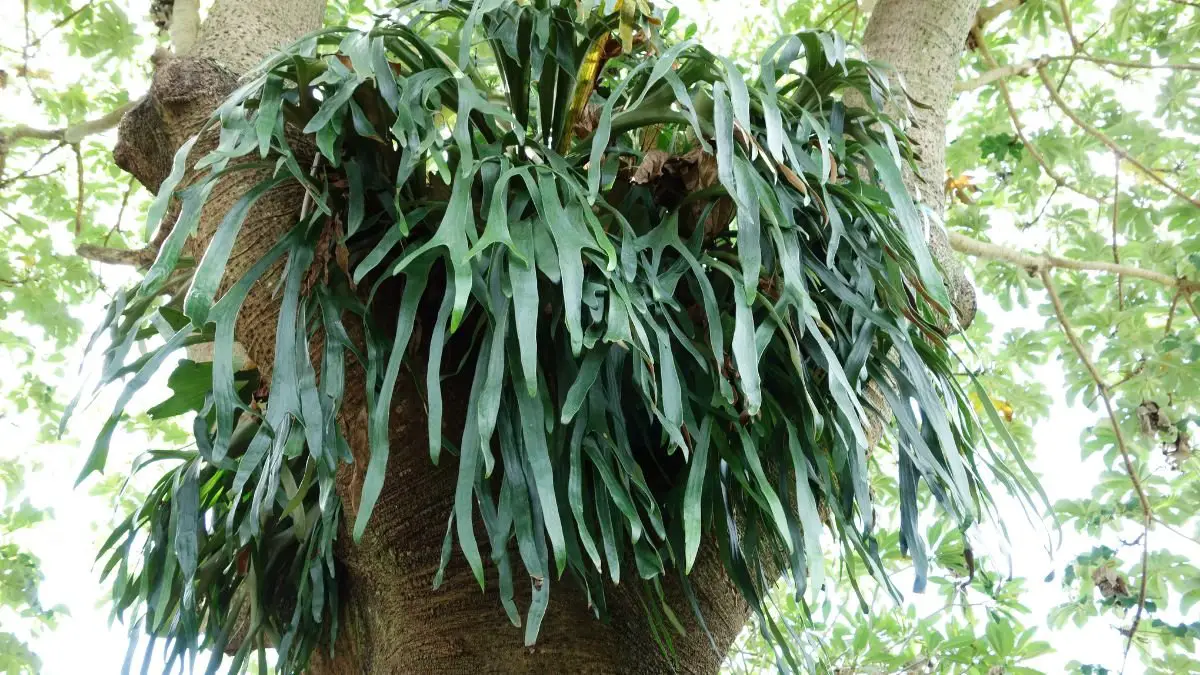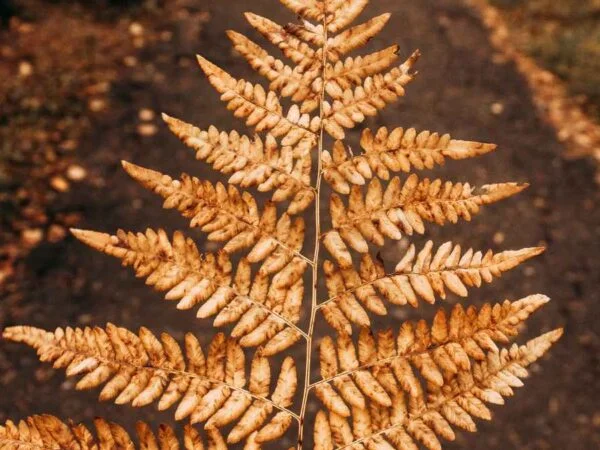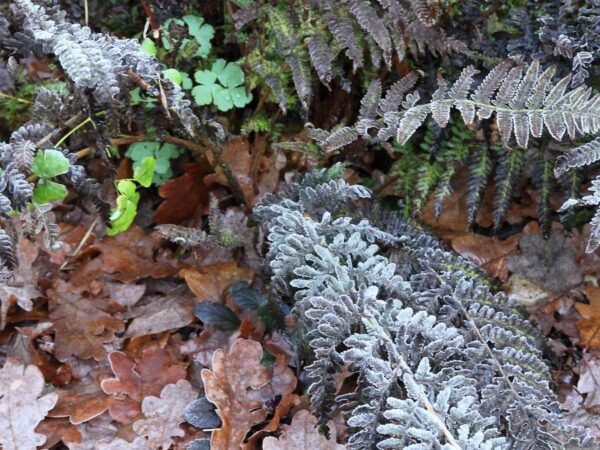Caring for a staghorn fern is a delightful contrast to typical houseplants. While it may seem intimidating at first, these unique plants require minimal care and can thrive with just a little attention. From their striking appearance to their air-purifying qualities, staghorn ferns make a stunning addition to any indoor space.
Staghorn ferns are known for their resilience and adaptability, making them an ideal choice for both novice and experienced plant enthusiasts. In this guide, we will explore the essential tips and techniques to ensure your staghorn fern flourishes in its environment. Get ready to learn how to care for a staghorn fern and elevate your indoor gardening game!
Key Takeaways
- Provide your staghorn fern with bright, indirect light to thrive.
- Water your staghorn fern thoroughly but allow the roots to dry out slightly between waterings.
- Maintain a warm, humid environment for your staghorn fern to flourish.
- Feed your staghorn fern with a balanced liquid fertilizer to support healthy growth.
- Regularly inspect your staghorn fern for signs of pests or diseases and take prompt action if needed.
- To propagate your staghorn fern, divide the plant or detach and replant offshoots.
Staghorn Fern Overview
Anatomy Basics
Staghorn ferns have different types of fronds including basal and foliar ones. Basal fronds serve as an anchor, while foliar fronds aid in photosynthesis. Variations in frond characteristics exist among various staghorn species.
Epiphytic Nature
Staghorn ferns grow as epiphytes, meaning they thrive on other plants without harming them. Providing support is crucial for their growth, ensuring stability and optimal nutrient absorption. These ferns absorb water through both their fronds and roots.
Types Explained
Species like Platycerium bifurcatum and P. superbum exhibit distinct differences. Understanding the growth habits of various staghorn fern species is essential for proper care. Solitary staghorn species possess unique features that set them apart from others.
Light Requirements
Ideal Light Conditions
Staghorn ferns thrive in bright indirect light, making them perfect for areas with filtered sunlight. This type of light mimics their natural habitat and promotes healthy growth. Adequate light is crucial for the photosynthesis process in staghorn ferns, ensuring they can produce energy efficiently.
When placed in settings with direct sunlight, staghorn ferns may struggle due to potential leaf scorching. Opt for locations with dappled sunlight or use sheer curtains to filter harsh rays. Providing the right amount of light is essential for maintaining the vibrant green color and overall well-being of your staghorn fern.
Artificial Light Survival
Staghorn ferns can adapt well to artificial light if natural light sources are limited. LED grow lights or fluorescent bulbs can be used as supplemental lighting options for indoor staghorn fern cultivation. These artificial lights play a vital role in compensating for inadequate natural light, ensuring that your staghorn fern receives the necessary light intensity for growth.
For indoor environments where direct sunlight is scarce, setting up a consistent artificial lighting schedule can help mimic natural daylight cycles. Ensure the artificial lights are positioned at an appropriate distance from the plant to prevent heat damage. By strategically incorporating artificial light sources, you can create a conducive environment for your staghorn fern to flourish indoors.
Watering Practices
Watering Frequency
Proper watering frequency is crucial for the health of staghorn ferns. Overwatering can lead to root rot, while underwatering causes dehydration.
Best Techniques
- Use a moisture meter to determine when watering is needed.
- Water thoroughly until excess water drains out of the pot.
- Ensure the growing medium is well-draining to prevent waterlogging.
Common Mistakes
- Avoid overwatering, which can suffocate the roots and lead to rot.
- Underwatering causes wilting and stunts growth in staghorn ferns.
- Prevent root rot by ensuring proper drainage and avoiding water accumulation.
Moisture Tips
Maintaining consistent moisture levels is key for staghorn ferns. Soak the basal fronds occasionally to provide additional humidity. Consistent moisture promotes healthy growth and prevents stress on the plant.
Temperature and Humidity
Ideal Temperature
Staghorn ferns thrive in temperatures ranging from 60 to 80 degrees Fahrenheit. This range is crucial for their optimal growth. Providing the right temperature is essential for staghorn fern health. To ensure proper growth, maintain a consistent warm environment.
Optimal Humidity
Humidity plays a vital role in the well-being of staghorn ferns. They require high humidity levels to flourish. To maintain ideal humidity, consider using a bathroom or misting techniques around the plants. This will create a suitable microclimate for your staghorn ferns.
Fertilization Needs
When to Fertilize
Staghorn ferns need regular fertilization during the growing season to thrive. Nutrients play a crucial role in their overall health and development. It is essential to fertilize them when they are actively growing to support their nutrient requirements effectively.
Balanced fertilizers have a significant impact on staghorn fern health. They provide the necessary nutrients in the right proportions, ensuring optimal growth and vibrant foliage. Regular fertilization helps maintain the plant's vigor and resilience against environmental stressors.
Choosing Fertilizers
When selecting fertilizers for staghorn ferns, consider using balanced and diluted liquid options. These types of fertilizers are easily absorbed by the plant, promoting steady growth without the risk of nutrient overload. Slow-release fertilizer pellets are another excellent choice for staghorn ferns.
These pellets release nutrients gradually over time, providing a consistent source of nourishment for the plant. They are convenient to use and reduce the risk of over-fertilization, which can harm staghorn ferns. By opting for slow-release pellets, you ensure a steady supply of essential nutrients for optimal growth.
Preventing Common Problems
Blackening Fronds
Staghorn ferns may develop blackening fronds due to overwatering or poor air circulation. To prevent this issue, ensure the plant's mounting board is not constantly wet. Trim affected fronds promptly to stop the spread of disease. Environmental factors like high humidity can also contribute to frond blackening.
Wilting Tips
To revive wilting fronds on staghorn ferns, mist them regularly and adjust watering frequency. Properly water the plant by soaking the roots thoroughly without letting them sit in water. Signs of dehydration include dry, crispy fronds that are drooping or turning brown at the tips.
Brown Shield Fronds
Browning shield fronds on staghorn ferns can result from excessive sunlight exposure or nutrient deficiencies. Address this by relocating the plant to a shadier spot and providing balanced fertilizer periodically. Shield fronds play a crucial role in protecting the plant by shielding its roots and aiding in nutrient absorption.
Propagation Techniques
Propagating Correctly
Staghorn ferns can be propagated successfully by dividing offsets. This involves separating the smaller plants that grow around the main fern. By gently detaching these offsets and planting them in a separate container, you can encourage new growth.
To ensure healthy growth in propagated staghorn ferns, it's essential to provide them with the right conditions. This includes adequate moisture levels, indirect sunlight, and a well-draining potting mix. Regular misting or watering is crucial for their development.
When propagating staghorn ferns, encouraging root establishment is key. Placing the divided offsets in a slightly damp growing medium will help stimulate root growth. Maintaining consistent humidity levels around the plant can aid in the successful establishment of roots.
Remounting Practices
When to Remount
Staghorn ferns should be remounted every 1-2 years to ensure optimal growth and health. Look for signs like roots overflowing the current mount or a decline in plant vigor. To safely remount, gently remove the fern from its current mount, trim any dead roots, and place it on a new one.
Mounting Materials
Consider using wooden boards, bark slabs, or wire baskets for mounting staghorn ferns. Proper drainage is crucial to prevent waterlogging and root rot. Wooden boards provide stability, while bark slabs mimic the fern's natural habitat. Wire baskets offer good airflow and drainage.
Pest and Disease Care
Common Pests
Staghorn ferns are vulnerable to mealybugs and scale insects, which can harm their health. These pests typically appear as small, white cottony masses (mealybugs) or hard, shell-like coverings (scale insects) on the ferns. To prevent infestations, regularly inspect your plant for these pests. If you notice any signs of infestation, such as sticky residue or visible bugs, take immediate action.
To effectively treat pest infestations on staghorn ferns, consider using neem oil or a mild insecticidal soap. Apply the solution directly to the affected areas following the product instructions carefully. Gently wiping the leaves with a damp cloth can help remove pests physically. Remember to isolate any heavily infested plants to prevent the spread of pests to other nearby plants.
Signs of pest damage on staghorn ferns include yellowing fronds, stunted growth, and visible bugs or eggs on the plant's surface. Keep a close eye on your fern's overall health and appearance to catch pest problems early for prompt intervention.
Disease Prevention
Preventing diseases in staghorn ferns involves maintaining optimal growing conditions. Adequate air circulation is crucial for preventing fungal infections and other diseases. Ensure that your plant is not overcrowded with other plants to allow proper airflow around its fronds.
Proper care practices play a significant role in disease prevention for staghorn ferns. Avoid overwatering, as excessive moisture can lead to root rot and other fungal issues. Use well-draining soil mixtures containing materials like peat moss to promote good drainage and prevent waterlogging.
Regularly inspect your plant for any signs of disease, such as discolored fronds, mushy roots, or unusual growth patterns. By staying vigilant and maintaining a healthy environment for your staghorn fern, you can significantly reduce the risk of diseases affecting its growth.
Summary
You now have a comprehensive understanding of how to care for your staghorn fern. From light requirements to preventing common problems, you are equipped with the knowledge to ensure your plant thrives. Remember the importance of proper watering, temperature control, and fertilization to maintain a healthy staghorn fern. Be vigilant against pests and diseases while considering propagation and remounting techniques for optimal growth. By following these guidelines, you can enjoy a flourishing staghorn fern in your space.
Take action today by implementing these care practices for your staghorn fern. Share your newfound knowledge with fellow plant enthusiasts and continue learning about different plant species to expand your gardening skills. Your dedication will not only benefit your staghorn fern but also contribute to a greener and more vibrant environment.
Frequently Asked Questions
How much light does a staghorn fern need?
Staghorn ferns thrive in bright, indirect light. They should be placed near a window where they can receive filtered sunlight. Avoid exposing them to direct sunlight as it can scorch their fronds.
How often should I water my staghorn fern?
Water your staghorn fern when the top layer of the soil feels dry to the touch. Typically, this means watering once a week during warmer months and less frequently during winter. Ensure that excess water can drain freely to prevent root rot.
What temperature and humidity levels are ideal for staghorn ferns?
Staghorn ferns prefer temperatures between 60-75°F (15-24°C) and high humidity levels of around 60-70%. To increase humidity, you can mist the plant regularly or use a humidifier. Avoid placing the fern near drafts or heating/cooling vents.
How should I fertilize my staghorn fern?
Fertilize your staghorn fern every 2-3 months during the growing season with a balanced liquid fertilizer diluted to half strength. Apply the fertilizer to the base of the plant, avoiding contact with the foliage. Do not over-fertilize as it can harm the plant.
What are some common problems that can affect staghorn ferns?
Common issues include overwatering leading to root rot, inadequate light causing poor growth, and pests like spider mites or mealybugs. Monitor your plant regularly for signs of these problems and take prompt action to address them effectively.
Image Source: Paid image from CANVA





